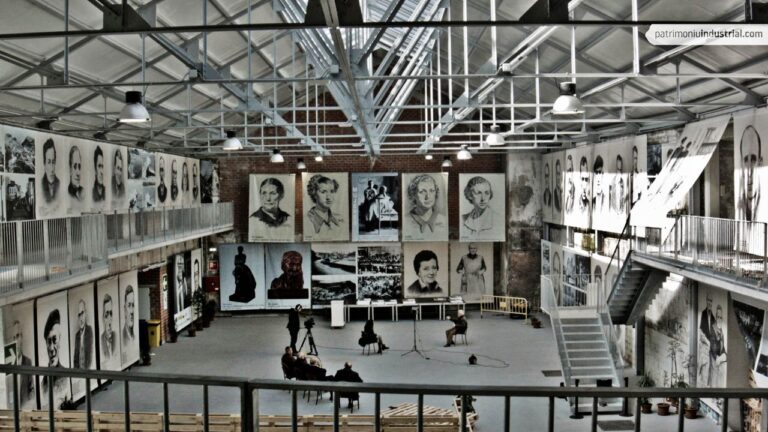Industry
The establishment of Gijón Industrial coincided with the arrival of the 20th century. It was promoted by two indianos (Spanish emigrants who became rich in Latin America) from Cuba: Antonio Díaz Blanco and Antonio Quesada. The company was located in the western area of Gijón, initially with a dual productive orientation: the production of glass and flour. While the flour factory only remained in operation for a few years, the glass factory was active for a long period of time.
After changing its corporate name to Gijón Fabril, it was set up in 1915 to produce flat glass and bottles. It had a direct link with the Ferrocarril del Norte railway, as well as a thermal power station that provided the energy supply, furnaces, mills where the necessary materials for the manufacture of glass were prepared, mechanical workshops for the production and conservation of bottle moulds, facilities to produce refractory bricks, warehouses, dispatch warehouses, administrative offices, a first-aid station, a canteen, and its own apprentice school to train its workers. In addition to all this, it also provided housing for workers and employees.
By the end of the 1960s, the company was taken over by Compañía General de Vidrieras Españolas and in 1981 it was renamed Vicasa (acronyms for Vidrieras de Castilla S.A.). The activity then moved to the industrial estate in Porceyo. As a result, the facilities were dismantled. The land it was placed in is currently occupied by a shopping and leisure centre, and the only remaining building is the one used to house administrative offices.
This office building, erected in 1905 using masonry and brick, is organised in two structures linked by a metal lattice arch that protects the main entrance. With a rectangular floor plan and a hipped roof, it is distributed over two floors, incorporating an attic with a mansard roof. After years of disuse, it was refurbished by means of an initiative of the municipality, and it housed a training centre for some time. A new project is currently being considered to convert it into a pilgrims' hostel.
PHOTO GALLERY






Recent Comments